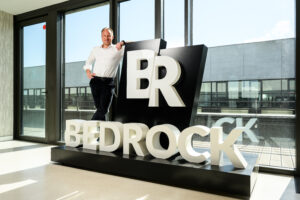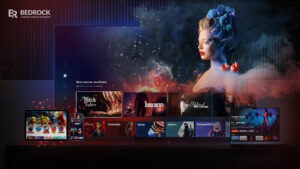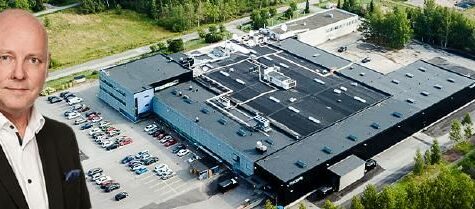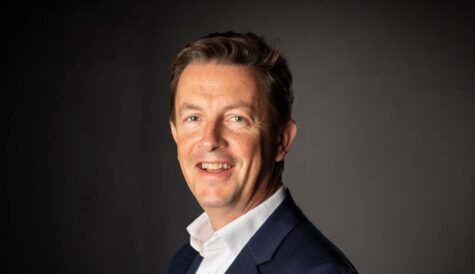Bedrock: how to deliver compelling OTT in constrained markets
Broadcasters and other media companies face huge challenges in competing with global streaming giants. Jonas Engwall, CEO of Bedrock, talked to DTVE about how multiple players can leverage a common core platform to deliver compelling offerings without allowing costs to overrun.
 Over the last few years numerous media companies and other content rights-holders have attempted to take advantage of streaming technology advances to create their own OTT service. Established broadcasters have notably been incentivised by shifts in consumer behaviour to attempt to build digital offerings to secure their long-term future as consumption of linear channels declines. However, building an OTT streaming service that is both compelling to users and which delivers a return on investment is a huge challenge.
Over the last few years numerous media companies and other content rights-holders have attempted to take advantage of streaming technology advances to create their own OTT service. Established broadcasters have notably been incentivised by shifts in consumer behaviour to attempt to build digital offerings to secure their long-term future as consumption of linear channels declines. However, building an OTT streaming service that is both compelling to users and which delivers a return on investment is a huge challenge.
For one thing, the investment required to create something that consumers enjoy using is considerable. Broadcasters and other media companies face competition for attention from very well-resourced global players who also have the advantage of being able to scale their investment in streaming platforms across multiple markets.
“You can clearly see nowadays that there is a global streaming standard that is set by global players,” says Jonas Engwall, CEO of streaming technology company Bedrock, which has worked with European broadcasters to develop and monetise compelling OTT services.
“Even if you are operating in a local market your users will also be users of Netflix or Spotify, so those companies set the benchmark. And we all know that those services are pretty good.”
That means that, as a minimum, broadcasters’ OTT offerings must have comparable features and be widely available in order to stand a chance of attracting a respectable share of consumers’ limited media consumption time.
“You must have very rich feature sets and be available on most of the devices that you can think of. And the service needs to be very stable and seamless. It’s all about having a stable platform,” says Engwall.
Beyond being attractive enough to be used by the target audience, OTT services generally also must deliver a return on investment. Increasingly, as for the big global players, that means a hybrid business model combining subscription with advertising.
“If you take Netflix, they started off as a pure SVOD platform but now they are also adding AVOD. Our clients, whether they started off as AVOD or SVOD players, are all pretty much adopting a hybrid model. So you need advanced capabilities to monetise as well as all those features that attract users,” says Engwall.
Hybrid models
 Bedrock has worked with a number of streaming services operated by different national broadcasters owned by its parent, RTL Group, to deliver compelling services that also provide that crucial return on investment. These services operate with varied business models – there is no one-size-fits-all approach to tie them all together.
Bedrock has worked with a number of streaming services operated by different national broadcasters owned by its parent, RTL Group, to deliver compelling services that also provide that crucial return on investment. These services operate with varied business models – there is no one-size-fits-all approach to tie them all together.
In the Netherlands, Bedrock has recently worked with RTL-owned streaming service Videoland to migrate its user base to its new, advanced and feature-rich platform.
“Videoland is a platform that has been really good at SVOD. They come from the SVOD space, which is something they have been doing for over 10 years,” says Engwall. “There has been excellent teamwork between Bedrock and Videoland that enabled us to migrate over a million paying subscribers to the new platform. As far as we know – and no-one has contradicted us – this is the biggest migration in the history of streaming in Europe. We had to be laser-focused on key KPIs such as churn and activity rate. Now that the migration is behind us I’m happy to talk about it because it went really well.”
The migration was completed last year, and in the year to June 2023, Videoland grew its base by 17.5% to 1.268 million users. Bedrock has more recently migrated the RTLplay service in neighbouring Belgium to its new platform, enabling it to deliver a more advanced user experience across connected TVs, mobile and the web.
In the very different market of Hungary, meanwhile, Bedrock has worked closely with another RTL-owned service, RTL+, which was launched using a hybrid model encompassing both advertising and premium subscription revenues.
“In Hungary they are very creative. They have a really strong platform and have a strong market position. They have three tiers – a free tier; a tier that they sell to telcos that has amazing penetration; and a pay tier that they sell direct to consumers,” says Engwall.
Bedrock most recently worked with RTL Hungary to develop the direct-to-consumer pay tier, which launched in November 2022. For Engwall a key takeaway from this service launch is the benefit of building different services based on a single common platform, which enables players in smaller markets to maintain a grip on costs and deliver a return.
“This was also very successful and again it goes to show the benefits of our philosophy of having a core platform. Effectively, we took the SVOD part of Videoland and transferred that to Hungary, reusing the same core for different clients, which enables them to benefit from a state-of-the-art platform at a reasonable price for that particular country,” he says.
That philosophy of building something once that can essentially be reused for multiple deployments also delivered benefits in Bedrock’s recent work with RTL Group-owned French broadcaster M6 to develop an SVOD offering to complement an existing advertising-based service, 6play max.
“This was a similar situation in that 6play came from the AVOD world, where the company has been very strong and have been doing that for many years. They recently launched SVOD, and again, because we had all those capabilities with Videoland in the Netherlands, covering approximately 60 devices, we were able to kind of pour all that into 6play max in a very short time,” says Engwall.
This meant that the company was able to get 6play max up and running within a few months from conception. “This again was a very successful launch on the back of having a technology platform situated somewhere else, so to speak, and then activating it for France,” he says.
Core platform
Working with a range of services facing different conditions and challenges, Bedrock was able to leverage a common core platform to meet the needs of multiple deployments, enabling faster time to market and keeping costs down.
“Our view of things, from when we started out, is that the core of the platform is not going to differ so very much from one country to another,” he says.
“What the user sees – the look and feel of the service – is where we have many APIs, giving us a great deal of flexibility and supporting multiple ways of adapting the core, but the basics of the platform are something we re-use across multiple countries. I think at the beginning people were sceptical if that was going to work, because everyone feels that their country is different.”
After four years of operating this model, Engwall now believes that perceptions have changed. While Bedrock began by working on the assumption that 80% of the elements of the platform would be common across markets and that 20% would be customised to meet different needs, he now believes that the split is more in the nature of 90% commonality and 10% difference.
“I think that’s a very big learning,” says Engwall. “It’s the only way you can reach the necessary scale to compete with global players. In Europe our markets are tool small in most cases, so we basically look to reach scale across countries, and that works really well for us. Our clients get an SVOD platform for an affordable price.”
This is sponsored content.



